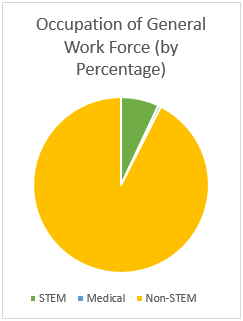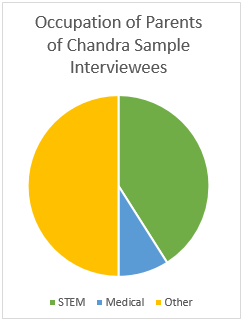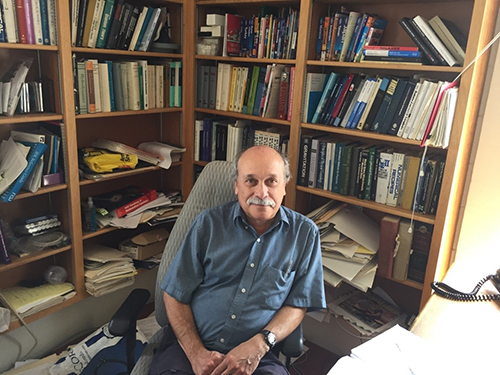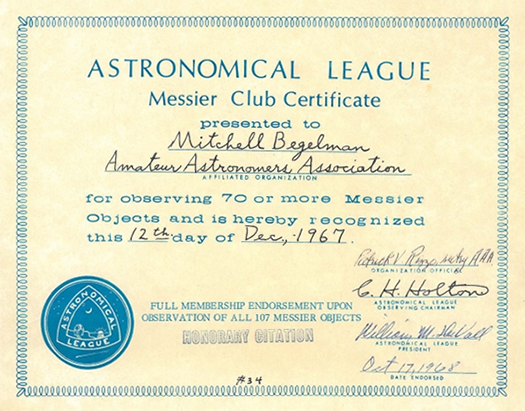Pathways to the Stars -- I

Illustration: NASA/CXC/K.DiVona
(A continuing series on how astrophysicists’ varied career paths. Pathways to the Stars -- II)
Our blogger today is Dr. Wallace Tucker, who has worked on the Chandra project since its inception and has been involved with high-energy astrophysics for several decades. In one of his many roles, Wallace has served as the Chandra Science Spokesperson, helping non-experts understand and enjoy the amazing discoveries Chandra makes. He is the author of several popular books including one published by Smithsonian Books.
How did you get to be an astrophysicist working with the Chandra X-ray Observatory?
This is a question that almost all of us who work with Chandra get asked at one point or another. Apart from cocktail party conversation — not that astrophysicists go to that many cocktail parties, in my experience — the answer is relevant in terms of ongoing efforts to increase the number of young people seeking careers in science, technology, engineering and mathematics.
And, on the principle that "none of us is as smart as all of us," it is important for maximizing the scientific return of Chandra to get as many people involved as possible. Think about it: some of the bright young minds working on Chandra data today were in elementary school when Chandra was launched!
With both these goals in mind, I asked this question of 70 scientists who have worked on Chandra in one way or another. They are a diverse group, coming from about two dozen different institutions and more than a dozen countries. Some of them received their Ph.D.s more than 50 years ago, and some are still working on it.
Here is a breakdown of the answers as to how they got interested in astronomy.
Early influences:
Heredity and Environment.
It's impossible to disentangle the roles of heredity and environment, but one or both definitely play a strong role in determining the career path of future astrophysicists.
In the U.S. and Europe the percentage of workers in the science, technology, engineering or math (STEM) sectors has been fairly constant over the last few decades, in the range of 5% to 7%. About 0.5% have been employed in a medical field.
In contrast, 41% of the Chandra interviewees had at least one parent who was employed in the STEM sector. This is much higher than the percentage of overall work force employed in STEM fields in the U.S. and Europe, which over the years has been fairly constant, in the range of 5% to 7%. Including those who had a least one parent working as a medical doctor (about half a percent of the workforce) raised the percentage to 50%. The Chandra survey is consistent with a much larger survey of 500 college students by Harris Interactive in 2011. This study, commissioned by Microsoft Corp., found that 37% of STEM college students have a parent in STEM.


For many, the decision to pursue a career in astronomy came early, and telescopes played an important role.
Joey Neilsen grew up in rural Missouri, where you could still see the Milky Way at night. His parents bought him a telescope, and he was hooked. Gifts of telescopes at young ages also pointed Anja van der Linden, Paul Sell and Reinout Van Weeren toward careers in astronomy. Chris Britt's father had a refracting telescope, and piqued Chris' interest in astronomy by showing him Jupiter.
Mitch Begelman, now a professor in the Department of Astrophysics and Planetary Science at the University of Colorado, established a name for themselves in astronomy while still in high school. Begelman decided he wanted to be an astronomer at age 5 after watching Disney program on space travel. His parents gave him a small refracting telescope for his 6th birthday, and by the time he was in junior high school, he was an active amateur astronomer.

Mitch Begelman, 2016

Mitch Begelman at age seven, with his first telescope.
Begelman studied the sky with his telescope from the rooftop of the 6-story apartment where he grew up in the Bronx, and later, in the Catskills where his astronomy club rented a cottage. He once spent the night on the observation deck of the 86th floor of the Empire State Building to observe a lunar eclipse. On another occasion, Begelman and his young colleagues got their picture on the covers of the New York Daily News and the New York Post for their daytime observations of the transit of Mercury across the Sun.
While in high school, Begelman became one of the youngest members of the Amateur Astronomers Association of New York, serving as the Deep Sky Recorder for that organization. He was one of the first people to earn a Messier Club certificate from the Astronomical League for personally observing all the Messier objects in the sky.
Begelman's interest in Messier objects has endured. He observed M1, or the Crab Nebula, many times with his telescope during high school. In productive career as an astrophysicist, Begelman has written more than a dozen papers on that fascinating object, along with hundreds of papers on black holes, as well as a classic popular-level book with Martin Rees, entitled Gravity's Fatal Attraction: Black Holes in the Universe.
That's an impressive scientific return on the investment of a small telescope.

Mitch Begelman's honorary citation from the Messier Club (above) was soon converted to full membership when he observed all 107 Messier objects.
Author: Wallace Tucker
References:
Bureau of Labor Statistics:
https://www.bls.gov/home.htm
Demographics of American Astronomical Society members:
https://aas.org/files/resources/aas_members_workforce_survey_final_jan2014v2.pdf
Percentage of work force in medicine:
https://members.aamc.org/eweb/upload/2015StateDataBook%20(revised).pdf
STEM Perceptions: Student & Parent Study Parents and Students Weigh in on How to Inspire the Next Generation of Doctors, Scientists, Software Developers and Engineers Commissioned by Microsoft Corp.: https://news.microsoft.com/download/archived/presskits/citizenship/docs/STEMPerceptionsReport.pdf
